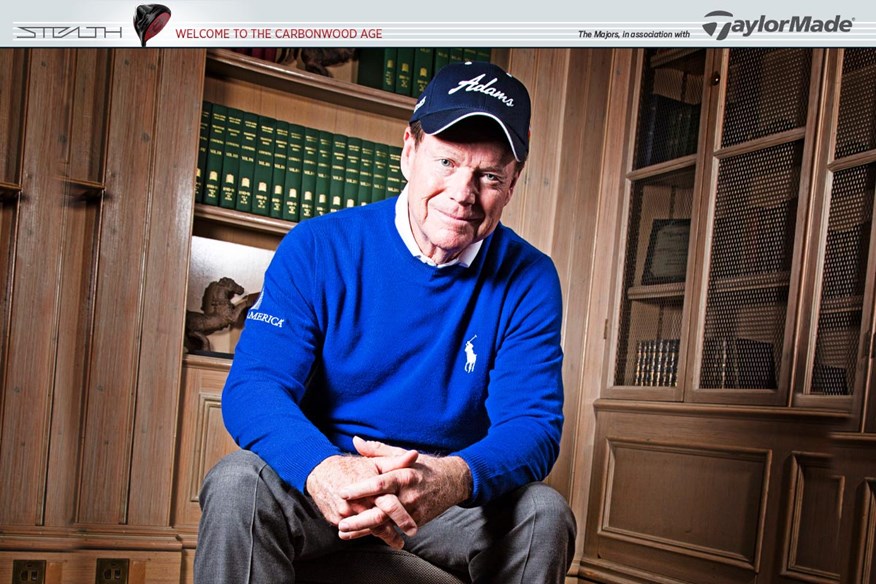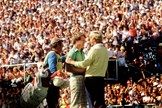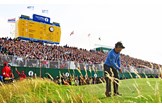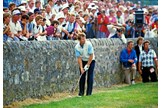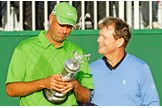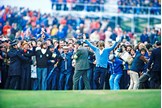Tom Watson – the modern game’s greatest Open champion
Published:
Tom Watson won the Claret Jug five times – the most of any player in the modern era – before calling time on his Open career at St Andrews in 2015. We caught up with him to talk about his relationship with golf’s most venerable championship.
Today’s Golfer’s 2022 Major coverage is brought to you in association with TaylorMade.
For a man with five Open Championship victories to his name, Tom Watson’s first encounter with links golf was somewhat inauspicious. Having qualified for the 1975 Open at Carnoustie, the 26-year-old from Kansas City, Missouri, arrived in Angus and headed straight to the course to play a Monday morning practice round. Refused entry because qualifying was still taking place, Watson instead made his way five miles south to Monifieth Golf Club for his first taste of the purest form of the game.
After hitting a perfect drive straight down the middle of the opening hole, Watson confidently strode down the fairway to play his next shot. Some 10 minutes later, he was still searching for his ball. After eventually giving up the ghost and hitting what he called “something of a provisional” onto the green, one of Watson’s playing partners spotted a small, blind pot bunker off the edge of the fairway.
The group went over to investigate. And there it was. “The ball had obviously hit a mound and careened sideways from the middle of the fairway into the sand. I didn’t like that,” Watson remembers now. “I recall saying at the time, ‘This isn’t the way the game should be played. You hit a ball straight down the middle of the fairway and it’s now dead?’”
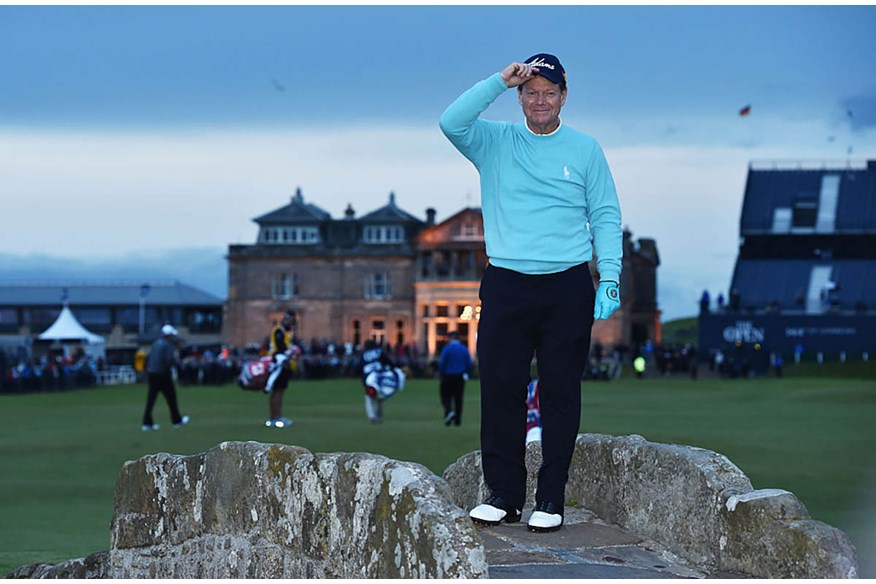
Though Watson managed to suppress his distaste of links golf enough over the next six days to win The Open Championship at his very first attempt, his love affair with the Championship took several more years to mature – his epiphany coming during a visit to Royal Dornoch with his good friend Sandy Tatum ahead of the 1981 Open at Sandwich.
With four of his five Open victories coming on Scottish soil, Watson unsurprisingly has developed a strong affinity to the country he has visited for the best part of five decades. A keen historian and traditionalist, it is not uncommon for him to randomly jump in a car and go exploring. During one such excursion in 1999 – to the Isle of Mull – Watson caught a quick glimpse of the nine-hole cliffside links at Tobermory from the town and ventured down to play, hiring a set of clubs from the pro shop. Later in the day, travelling back across Scotland, Watson and his friends stopped by a local golf club to watch The Open Championship play-off.
Wearing his baseball cap, Watson had just bought a beer and sat down to watch the golf when he heard someone yelling at him. “Hat off, hat off!”
Neglecting to remove his headwear in the clubhouse was a rare lapse in etiquette for a man who thrives on upholding the unique traditions of the game and treating others as he would like to be treated himself.
Different players have different motivations for wanting to be a tour pro. What was yours?
My motivation was that I loved the game and I wanted to compete against the best. I enjoyed the competition as a kid and I had a great passion that was taught to me by my father and other people around me when I grew up. When I got onto the PGA Tour, I tried to work harder than anybody else out there to find out just how good I could be. I don’t practise as hard now for sure, but that motivation has never changed over the years.
Who are the most talented golfers you ever played with?
Jack Nicklaus, Lee Trevino and Johnny Miller. Miller, for a short period of time, was just about the best I ever saw. Lee was probably the best ball-striker in my era. But Jack was the consummate competitor. He just wore you down because he didn’t make mistakes. He had the ability, the best of anybody out there, to hit the correct shot at the right time.
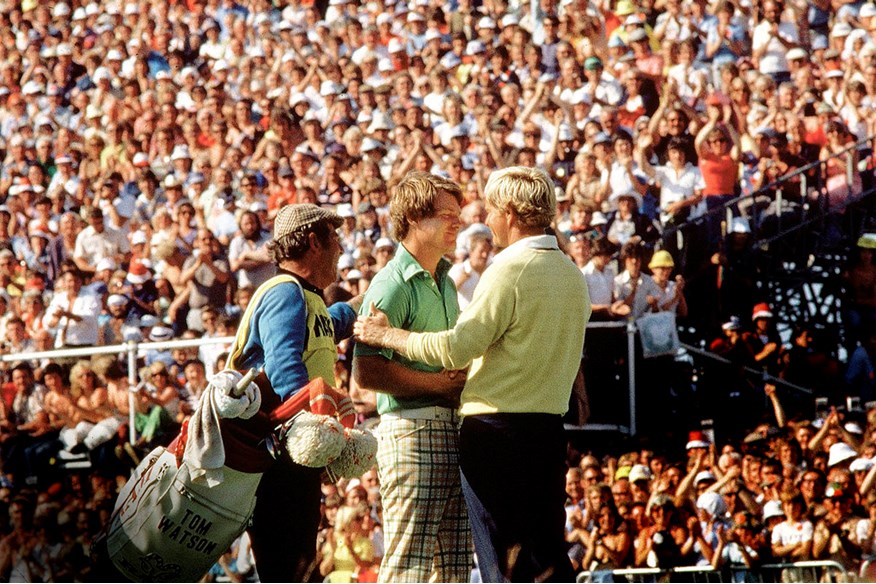
Is it true that you modelled your swing on Jack’s technique?
When I was 16, I played with Jack at an exhibition match in Topeka, Kansas. It was a cold day in March and I remember watching him hit these impressive high long-irons. I wasn’t a very good long-iron player at the time, so I went back to my coach and told him that I wanted a more upright swing. That’s how my swing evolved. I had a stronger grip and had a little more rounded backswing, so I switched to a weaker grip to help get my backswing a little steeper.
What are the most standout memories from your career?
My first victory at the Western Open in 1974 springs to mind. I remember making a birdie on the par-4 14th hole, where on the previous day I had made a quadruple-bogey. I ended up winning by two shots over Tom Weiskopf on a very tough Butler National course. I also remember my second Open at Turnberry very well. At the time, I was still evolving as a player and a competitor. The confidence I had after winning that tournament extended throughout my career. I finally felt that I could play against the best and beat the best.
Winning the US Open in 1982 was a big lesson in perseverance. I went into that tournament hitting the ball sideways. But somehow, during the first two rounds, I managed to finish very strong with three birdies in the last four holes on one day and three birdies in the last five holes on the other to shoot even par both rounds. By all rights, I should have shot 77 or 78 and maybe missed the cut.
I went to the practice tee and that perseverance kicked in. I hit balls for an hour and couldn’t find anything, then I finally found that keeping my left arm closer to my body improved my ball-striking. I played very well the last two days. I made every putt on the Sunday to win the tournament I wanted to win the most – the national Open.
Which swing flaws or idiosyncrasies do you constantly have to keep an eye on?
Well, right now, it’s a hang back when I swing through the ball, trying to help lift the ball in the air. That’s how I used to swing and I hit the ball high but consistently. Now when I do that, I hit the ball fat. I can’t get out of my own way. In my prime, hitting the ball right was the thing I had a problem with, until I made a swing change in ’94 that made the game easy for me again.
What was the change you made?
Keeping my right shoulder higher at impact. It stops me hanging back. I now swing more around myself and get my shoulders on the same plane in my follow-through as I did on the backswing.
What was your first impression of playing links golf?
I didn’t like links golf at all. I played golf through the air – the American way. I liked to hit the ball very high and stop it quickly. And I didn’t like the blind shots.
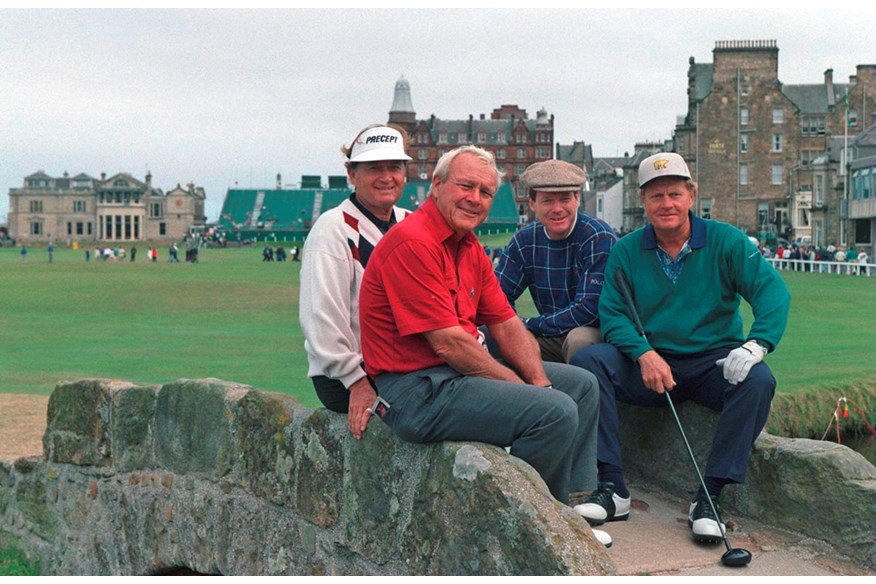
You acclimatised pretty quickly since you won the first Open you entered, beating Jack Newton in an 18-hole play-off at Carnoustie in 1975. What do you remember about that day?
I remember simply trying to play my game. I was playing well but I got off to a shaky start in the play-off. I hit it way off to the right on the opening hole but got a 5-iron to the green for a safe and easy par. I got up and down after leaving my ball in the bunker at the 5th hole for bogey, which was critical. I also got a great break hitting the ball off the OB stake on the 8th. You need to catch some good breaks along the way to win Majors.
You chipped in for an eagle at 14 after Jack had chipped it close to make birdie. Was that a pivotal moment?
That was an easy chip. I had a good lie and it wasn’t too far out from the hole. I hit it exactly where I wanted to and holed it.
RELATED: Key questions with Tom Watson
So you’d won The Open but you still didn’t like links golf, right?
It took me a long time to appreciate that style of golf. I changed my mind after playing a wonderful series of rounds with my friend Sandy Tatum prior to the 1981 Open at Sandwich. We started at Ballybunion and had a glorious time there, then flew over and played Old Prestwick and Troon in one day before taking a helicopter up to Royal Dornoch. We played a morning round at Royal Dornoch in just beautiful conditions. After we played, the golf historian Donald Grant had organised a wonderful reception in the clubhouse.
An hour-and-a-half later, the weather had turned. The wind was howling and the rain was coming down sideways. I looked at Sandy and said, “Let’s go play.” He said, “Just what I was thinking, I’ll go organise the caddies.” So instead of having 1,000 people following us like we had in the morning, we just went out the two of us with our two caddies and played in the rain and the wind. On the 16th hole, I said to Sandy, “This is about as much fun as I’ve ever had playing golf.” That’s when I truly fell in love with the links style of golf.
In 1977, you beat Jack Nicklaus in the legendary ‘Duel in the Sun’ shootout at Turnberry. Having also edged him in the Masters earlier that year, what did that victory do for your confidence?
It was the comment that Jack made walking off the 18th green that affected me the most. He said, “Tom, I gave you my best shot but it wasn’t good enough. Congratulations. I’m happy for you.” Jack was always marvellous in giving credit to the people who had beaten him. The credit he gave me reinforced in my mind that I could play against the best and prevail. It meant I had learned how to win, and not choke it away and lose like I had earlier in my career.
What clicked into place to enable you to learn how to win and close out Majors?
It doesn’t just click. What happens is that, over a period of time, you learn through the experience of playing under pressure how you tend to react in those situations. Early in my career, when I got into contention in a high-pressure situation, I wanted to get it over with quickly so I played quickly. I learned to recognise when that was happening and then slow myself back down to the proper pace. You also learn how to manage golf courses better – how to make smarter decisions.
How different a player were you in 1977 compared with 1975?
I was a much better player in ’77 from a technical standpoint. Though my Carnoustie victory in ’75 was somewhat unexpected given that it was my first experience of playing links, I had been up there in the Majors so it wasn’t a totally new experience to find myself under Major championship pressure. I’d had a chance to win the ’74 US Open at Winged Foot and the ’75 US Open at Medinah. I also played well in the Masters in ’75, when Jack beat Johnny Miller and Tom Weiskopf.
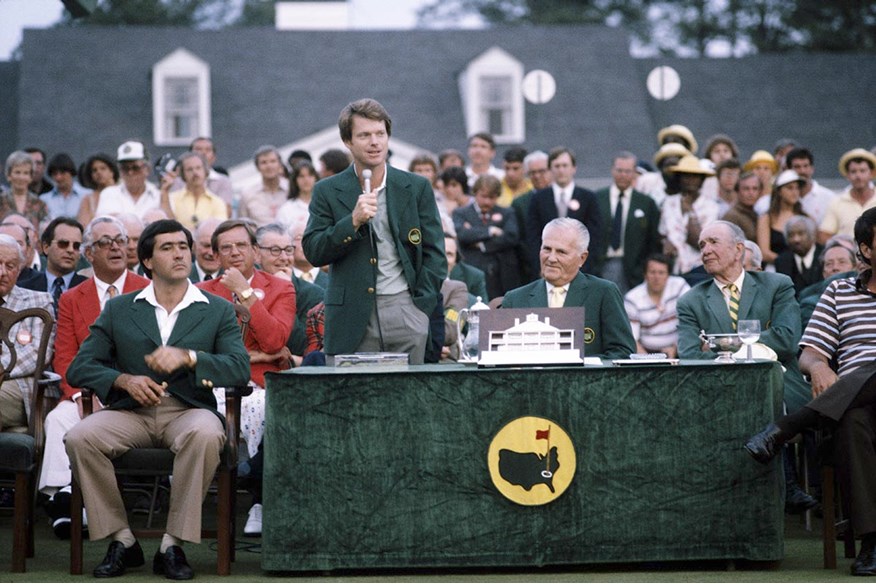
You shot 65-65 during the final two rounds, while Jack shot 65-66. At what point did you realise something special was happening?
In the last round. We had pulled so far clear of the field it was just a two-man show. The moment I remember most was on the 14th tee. We were waiting for the enormous crowd to disperse in front of us through the crosswalks. Jack and I were both looking down the fairway. It was so dry and because the dust was coming up in clouds, it was like looking through the mist into the sun. I turned to Jack and said, “This is what it’s all about.” He continued to look straight ahead and said, “You bet it is.”
Can you ever remember playing better golf than you did over those two days?
It was certainly one of my best weeks in terms of quality of golf. I was in control. It was one of those times where you get the yardage, you hit the shot, and you make the putt. It was pretty simple. Not too much extraneous thought.
If you could replay one shot from your Open career, which would it be?
I’d like to have that putt over again on the 18th hole at Turnberry in 2009. I hit such a lousy putt. It really was poor. Never gave it a chance. That was the disappointment right there because I had to make that putt. It was a bad stroke, decelerated on it. It was a terrible putt.
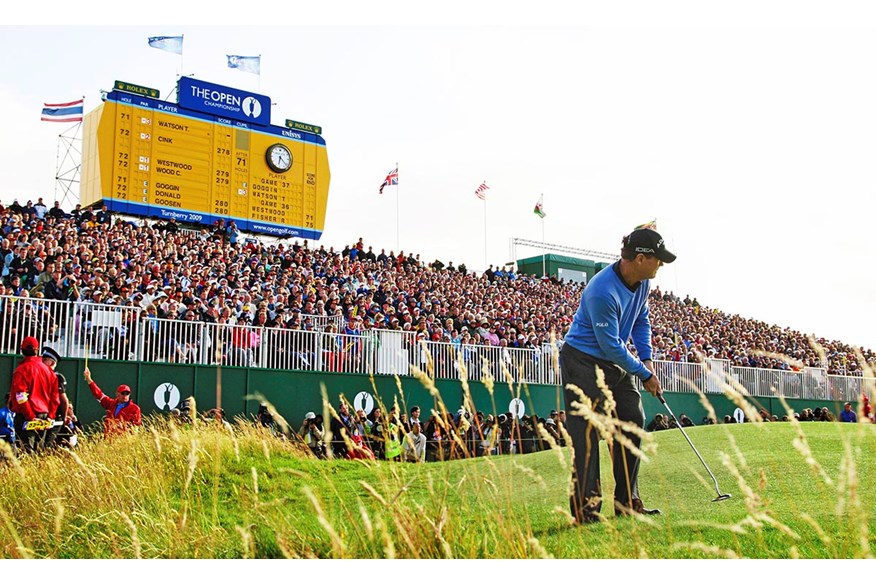
What was your first impression of St Andrews?
The first time I played the course was in 1978. I really didn’t like it at all at the time. It was too blind and there were too many bounces and variables. I didn’t like playing the game with so many variables. I always liked to be in control.
You’ve had a couple of close calls at St Andrews without winning, starting in 1978. You were in contention, but faltered in the final round.
It was a tough day for me. I got off to a bad start and I could never get it going. You have days like that, but it came at an inopportune time when I had a chance to win. It was very, very disappointing. Having said that, you really learn more from your bad play than your great play. Whenever I’ve played poorly, I’ve always gone straight to the practice tee to correct whatever problems I’ve had.
In 1984, you were tied for the lead with two holes to go, then you bogeyed 17…
I was tied for the lead with Seve, standing on the 17th tee. I played it knowing he’d made par in the group ahead and so I knew I had to make par there, too. I hit a drive in the fairway but down the right-hand side and it finished on an upslope. I knew the ball would launch high and, because it was into a headwind, I felt I couldn’t land the ball short and still get it to run up to the correct level of the green. In hindsight, I should have played short and taken my chances with a long-range two-putt or a bump and run, but I decided to try to hit it high and carry it all the way to the top level. It was a risky shot that didn’t come off. I pushed it way right and it landed up against the wall.
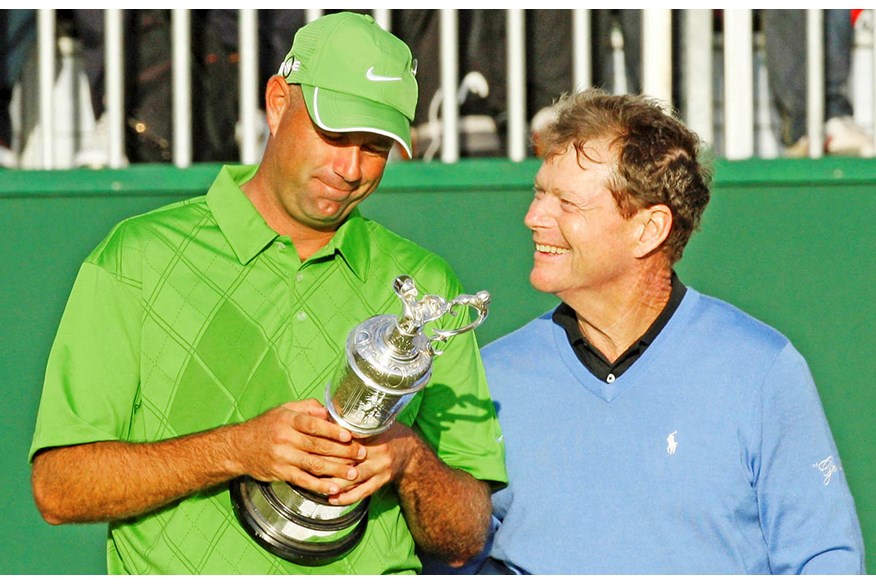
You hit a good recovery, though…
I hit a great shot from against the wall to get it on the green and had about a 20-footer to save par. But before I had a chance to hit the putt, Seve made his putt for birdie on 18. So I knew I had to make that putt to realistically have a chance to win.
Like yourself, Seve is synonymous with The Open. What are your memories of him as a player?
He was a marvellous golfer with a wonderful touch. He had great hands and a flair for the game. He played with real passion in his eyes. That’s what I remember most about him. We played together in the US Open at Oakmont in 1983 when I had a chance to win. He wasn’t driving the ball very straight and so he was hitting irons off the tee and leaving a lot of long shots in. Though he played decently and got the ball up and down, he was at a distinct disadvantage, not hitting driver.
RELATED: The Secret Life Of The Swilcan Burn
Is the Old Course still a good enough test for the modern player?
Of course it is. If you don’t have any wind, you can definitely shoot low scores on the Old Course, but there haven’t been too many Open Championships without wind. The most important scoring factor at St Andrews – as with all links golf courses – is the firmness of the turf. The course plays at its most difficult when it’s hard and running. And links courses almost always play firm. You have to hit quality golf shots to hit the ball the correct distance.
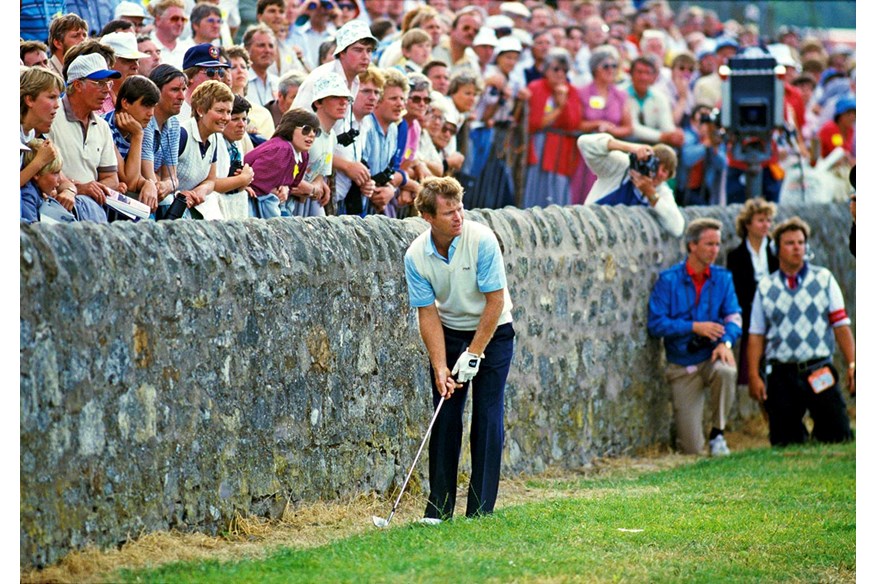
What do you think of St Andrews town?
The time The Open was here in 2010 was the first time I’d spent much time at all in the town. It was fun and it had changed quite a bit. In the ’70s there was one fish and chip shop, and that was about it. Everybody ate at home. It’s more commercial now, but still fun. My step-daughter sang and played music at one of the pubs and I went and watched her a few nights. It’s a great town because people really congregate. Not to mention the course begins and ends in town.
You’ve often said Muirfield is up there among your favourite courses. Tell us about your Open victory there in 1980.
I knew I had a great chance to win The Open that year as early as the Tuesday afternoon that week. I was staying at Greywalls Hotel. I had played a practice round in the morning and was in the library having a beer when in walks Arnold Palmer, Jerry Pate and Andy Bean. Jerry Pate is chatty anyway, but on this particular occasion he was all over Arnold because he had taken about $300 off him in a bet. Arnie wasn’t happy at all. He ordered a beer and sat down but Jerry kept sticking the needle in him. Finally, Arnie looks at me and says, “Tommy, let’s go play these SOBs!” So we went out and played an emergency nine-hole match over the back nine.
I was playing well, but my putting was exceptional. It seems like I made every putt. On the 1st hole, Jerry hit a beautiful shot down the middle of the fairway, while Arnie and I both hit it in the rough and had to chop out. I hit my third shot 25 feet past the hole, and Jerry was about 10 feet away in two. I holed my 25-footer for par and Jerry missed his birdie putt. On the 16th hole, Andy Bean said to Jerry, “I’m not pressing anymore. I’ve had enough.” We got Arnie’s money back and then some.
RELATED: Meet the voice of The Open
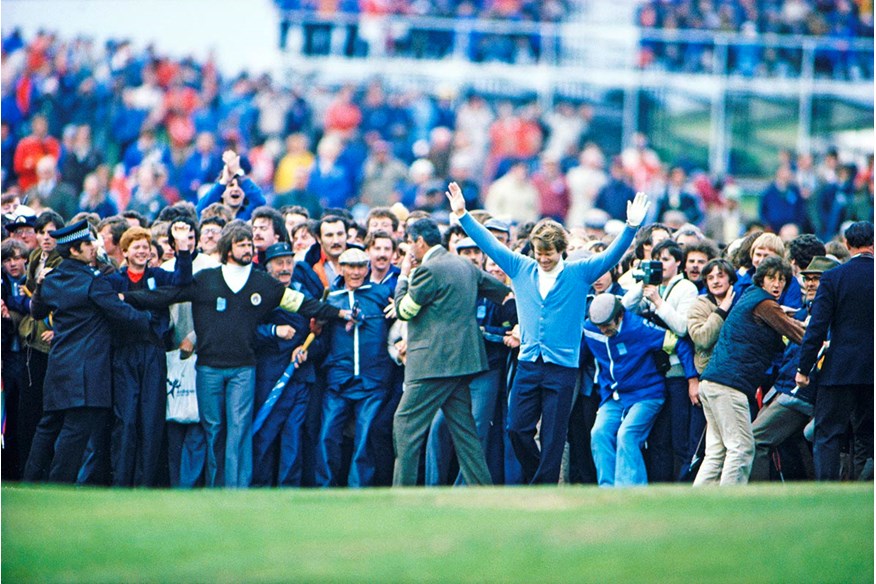
You had a four-shot lead heading into the final round. What do you remember of that last day?
I remember getting a very lucky break on the 1st hole in the last round. I hit the ball in the left rough and then hit a 2-iron out. Pushed it. There are some bunkers just short and right of the 1st green at Muirfield. My ball was going way right but it caught the side slope of the bunker and carried on straight left to the back of the green where I two-putted for par. I was going for bogey or worse when that ball was in the air. I said, “Jeez. Not a great way to start when you have a four-shot lead.” I then made three birdies in a row and got it all back under control.
And your victory in 1982 at Troon?
That was Nick Price’s tournament. When he won at Turnberry in ’94, he said, “I had one hand on the trophy, now I’ve got two.” I believe I was five shots behind after his 9th hole. I eagled 11 but then bogeyed 12. I knew I had to play solid golf coming in over the toughest incoming nine on The Open rotation. Playing into the wind it really is a monster test. The 13th and 15th, in particular, are brutal. But I parred them both. I then saw that Nick had double-bogeyed 13. All of a sudden now, I’m getting closer. After he bogeyed 15 and 17, I came in the back door. I did come out and watch on the last green. Price hit it over the back of the 18th green. When he didn’t hole his chip, I had won.
That was also the year Bobby Clampett raced into the lead. What did he have – a five-shot lead? Then he made a nine at the 6th hole. You learn very quickly that it’s not a 71-hole tournament, it’s not a 71.5 hole tournament, it’s a 72-hole tournament.
One of my memories that week is (Ben) Crenshaw getting a raw deal with the weather. I remember him going out one morning. The wind had switched from the south, so he teed off directly into the wind. Then, when he made the turn, the wind switched so he played the back nine into the wind, too.
And finally, an Open victory on English soil at Birkdale in ’83…
I wasn’t playing particularly well that week. I was partnered with Nick Faldo the first two rounds and really I just scrambled a lot. I played a bit better on the Saturday and reasonably well on Sunday. I just kept it out of trouble, basically, staying even with the lead, one behind, even again. I had good birdie chances on 14 and 15 but didn’t make them on either. That was very frustrating because I was tied for the lead at the time.
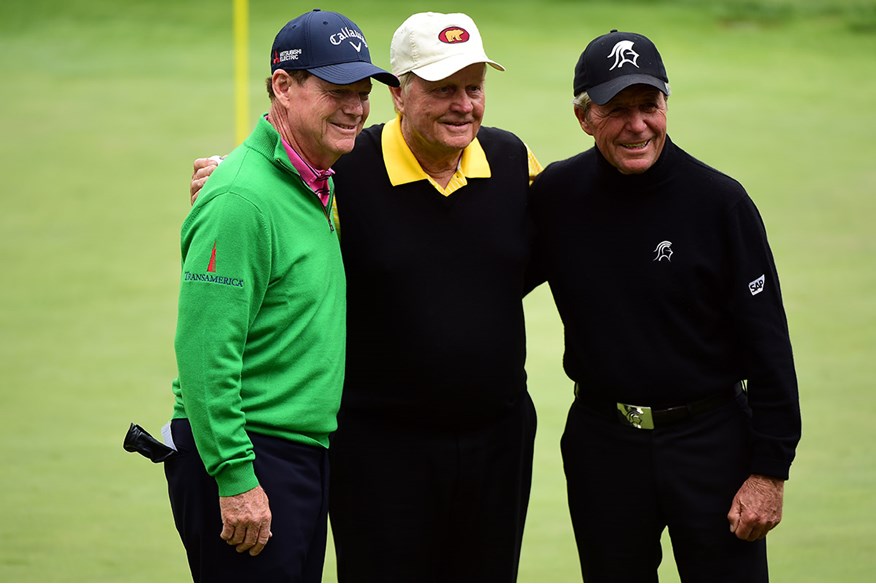
Then the 16th happened…
Yeah, I hit a good drive and a good second shot but the ball didn’t stop where I wanted it to and it ran 25 feet past the hole. I read it perfectly and made the putt. That was the turning point right there. I now had a one-shot lead. I missed an eight-foot birdie putt on 17. Then I had to play 18 into the wind. I hit as good a drive as I could possibly hit – a stock shot power fade into the fairway. That tee shot was perfect for me since the fairway bends to the right.
I remember having to wait an interminably long time for the group ahead of us to finish because they were having trouble on the hole. The crowd had crossed the fairway to look at the second to last group, then they had to be shepherded back again. This took forever so I sat down on the fairway to wait.
What club did you have in to 18?
It was 205 yards into the wind so I hit 2-iron. I hit the shot as solidly as I could hit it. However, when it came out, it started turning left of the flag. My caddie Alfie said, “Stop hooking.” I said, “Don’t worry, Alf. Don’t worry.” I knew the strong left-to-right wind would push it back on track. The ball dropped straight on the flag but I never saw it land. The crowd just collapsed in front of me. The applause told me that the ball was on the green, but I didn’t know whether it was five, 10, 20 or 30 feet away – or whether it was kick-in. All I cared about was whether it was close enough to get it down in two without any difficulty. Only when the crowd parted did I see the ball close enough to say to myself, “Yeah, I can get that down in two.”
MORE FROM THE OPEN
Who is playing in the 150th Open and how did they qualify
Rory McIlroy – ‘I’d love The Open to be at St Andrew’s every year’
Shaun Lowry – ‘Winning The Open hasn’t changed me’
